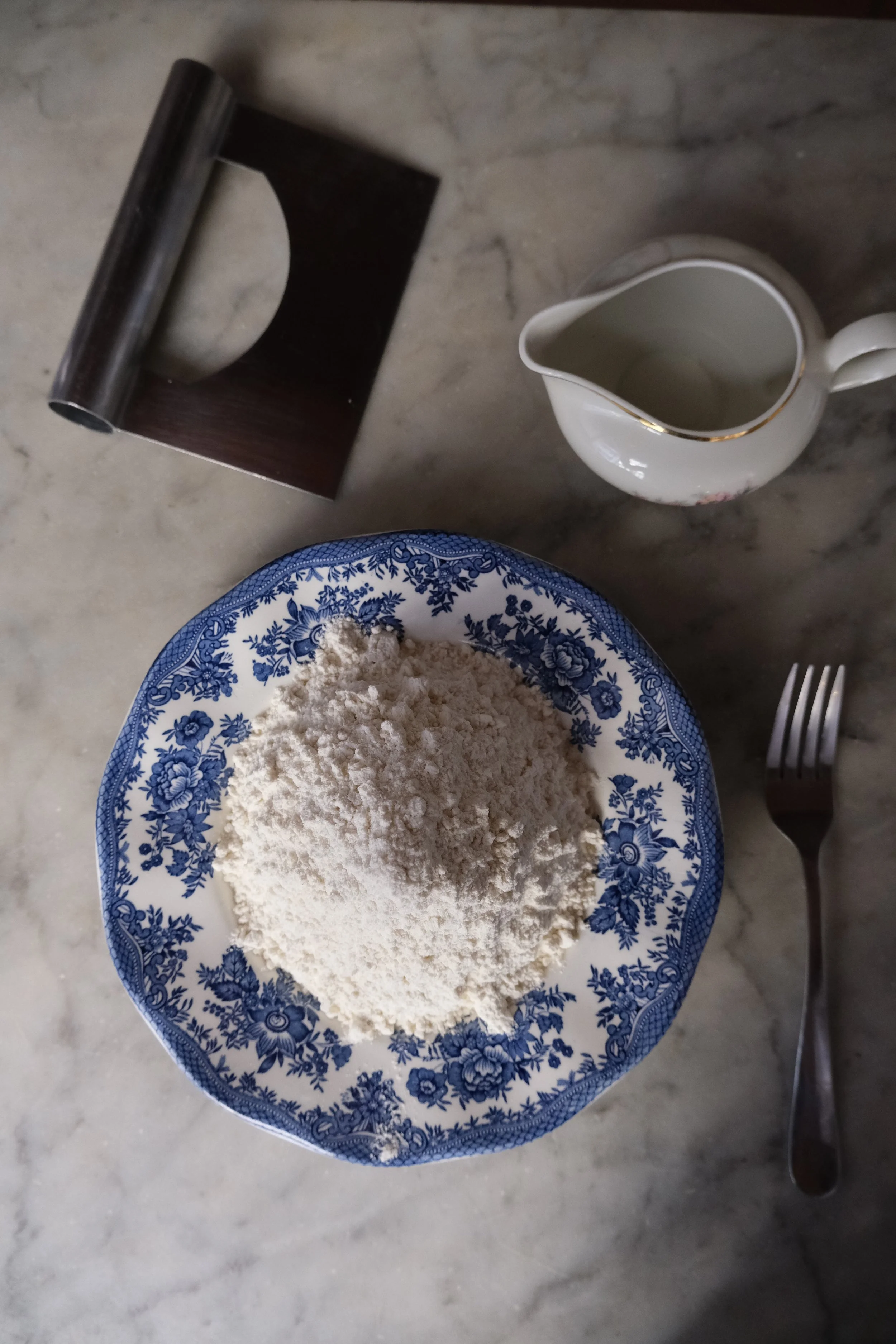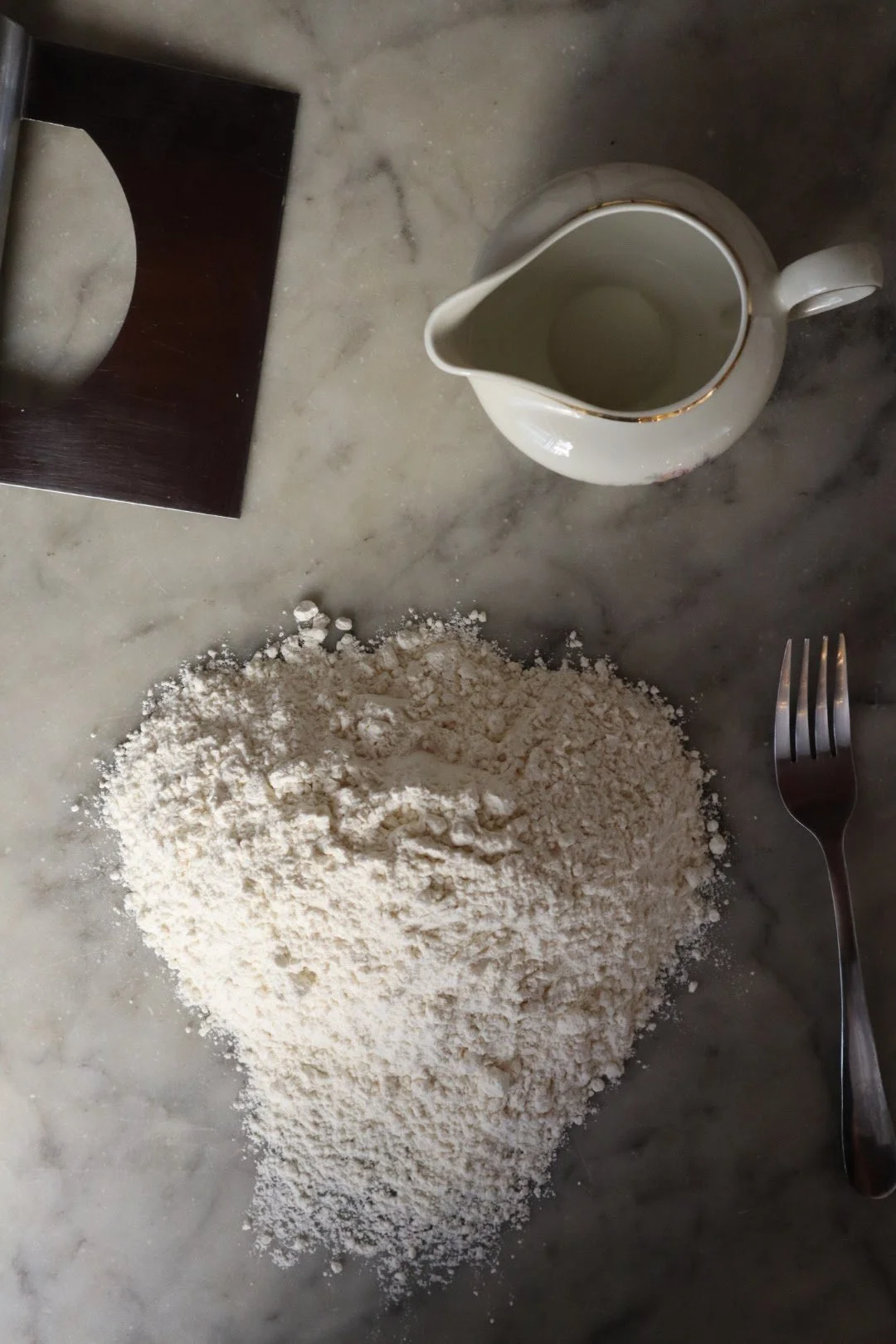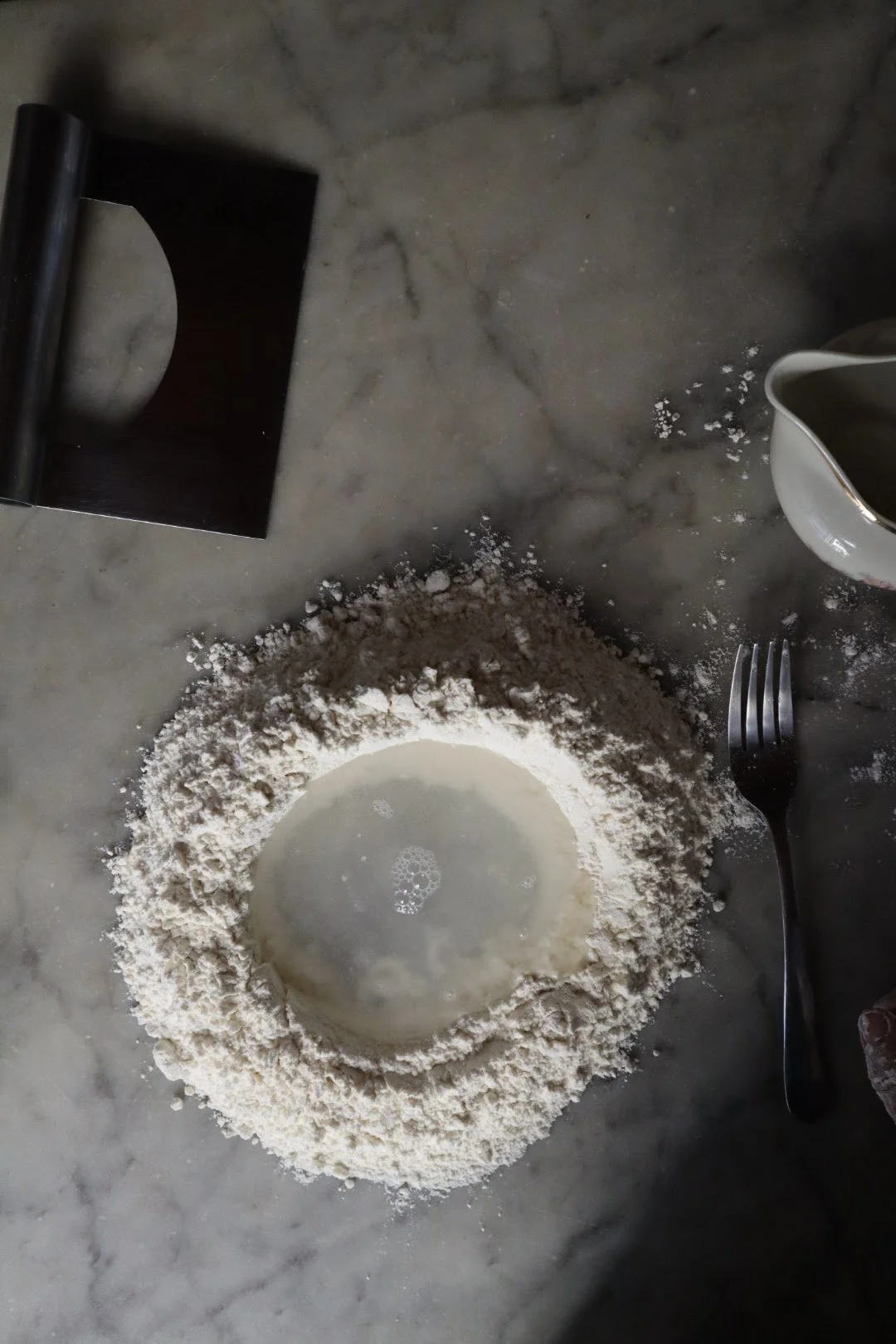Flour + Water Dough
Flour and water doughs are very typical of Southern Italy and it was born out of local ingredients available. While eggs were plenty in the North, in other parts of Italy it was considered a luxury. Today there are many shapes that are made with just flour and water out of local tradition. Shapes such as pici, cavatelli, malloreddus, orecchiette, strozzapretti, there are just too many variations to name but those are just a few.
The ratio is typically 2 parts flour to 1 part water. The most common flours to use are Grano Tenero, 00 flour, or Grano Duro, Semola flour. I find it’s best to start with 45% hydration which is slightly less than 1 part flour. For every 100 grams of flour, I use 45 ml warm water which makes the dough easier to work with. Keep in mind that 00 flour is much softer, whereas semolina is a much firmer flour with more of a bite.
Note: You may have the thought that your dough is slightly dry, but resist adding more water until you’ve tried kneading it for several minutes. This dough often appears to be dry and crumbly at the beginning, but after kneading really well it often comes together perfectly with this ratio of flour to water. If your dough is in flaky pieces do your best to press them together into a ball of dough, and continue to knead.
00 Flour and Water
Method:
You measure the flour for the number of portions you’re making and lay it on your work table. Make a well in the middle and add the warm water. Using a fork and moving in a circular motion slowly incorporate the flour from the inner sides of the well with the water. Once the water has essentially appeared to have been absorbed by the dough, clean off any excess flour from the fork and work only with your hands from this point. Use your fingertips to lightly press or smush the flaky dough together. After a couple of minutes, it will become a more cohesive dough and you will switch to kneading. With kneading, you’re really using the heel of the palm of your hand to push away and back, with a slight turn. You knead for a few minutes until you achieve a cohesive dough that is soft, yet not sticky but very well combined. You wrap the dough in plastic or you can place it on your counter with an upside-down bowl placed over it. It shouldn’t be exposed to air so that it doesn’t dry.
After it’s rested for 30 minutes you can begin rolling out or shaping the dough.
Make a well and add the water in the center
Gradually incorporate flour from the inner walls of the well with the water until the water is absorbed




